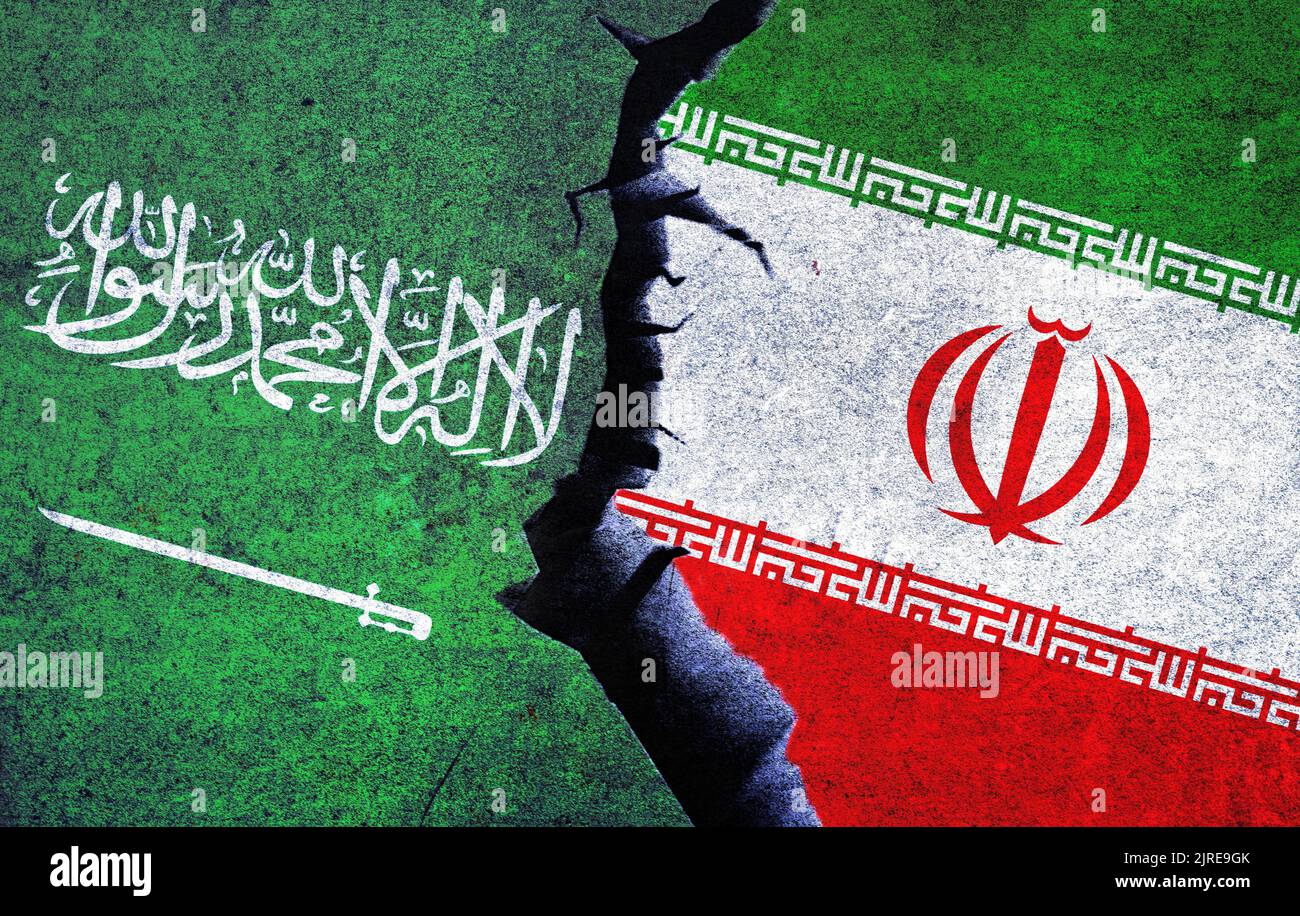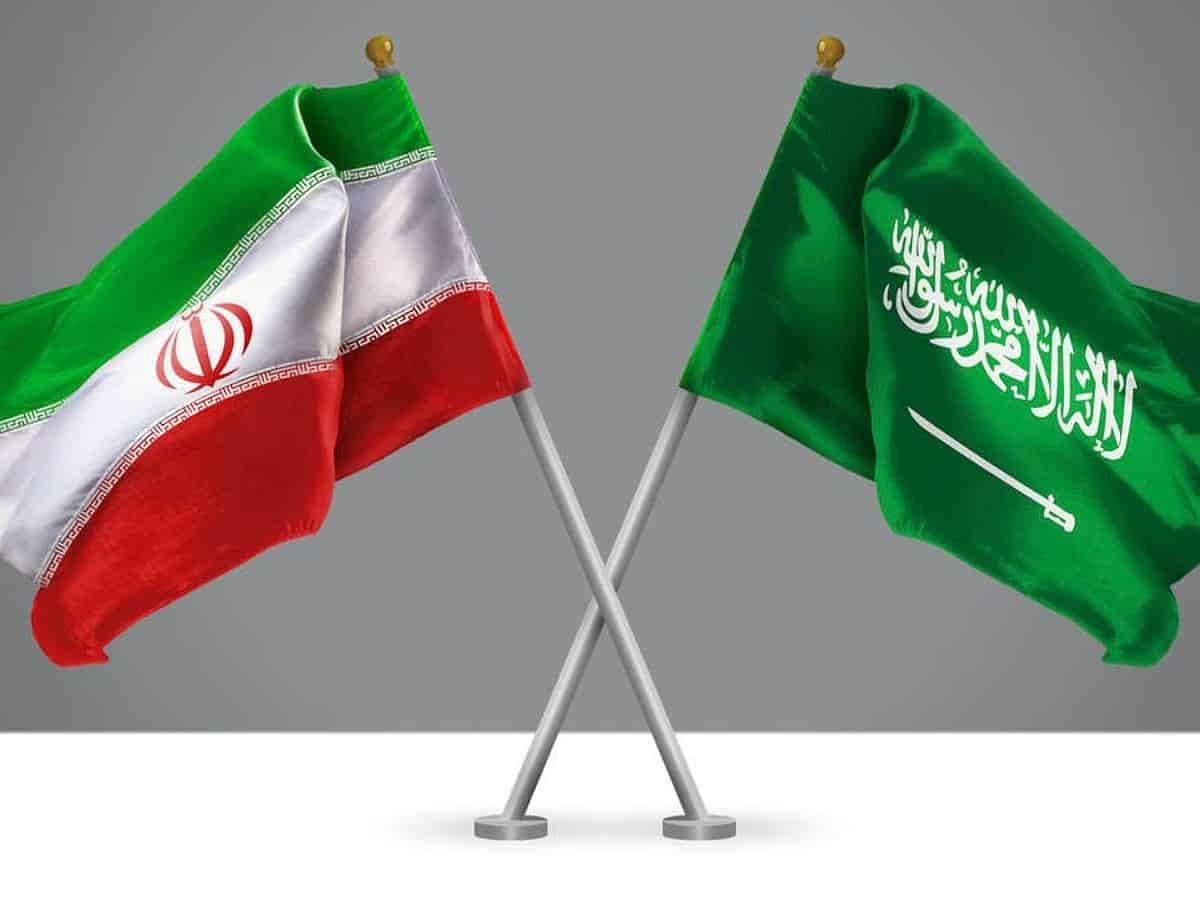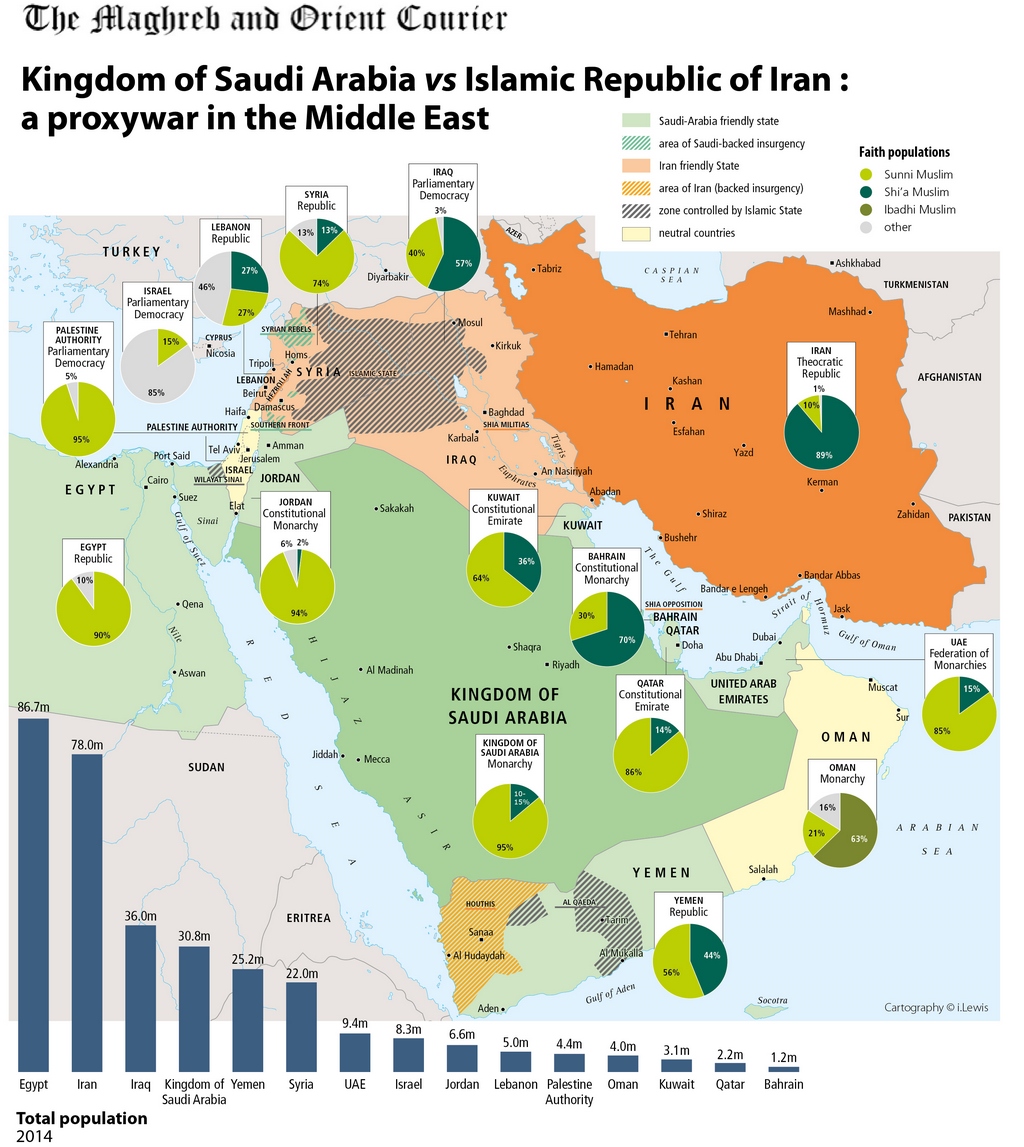Iran & Saudi Arabia: A New Dawn In Middle East Diplomacy?
**Table of Contents** * [A Legacy of Rivalry: Understanding the Deep-Seated Divisions](#a-legacy-of-rivalry-understanding-the-deep-seated-divisions) * [Iraq, Syria, Yemen: Battlegrounds of Influence](#iraq-syria-yemen-battlegrounds-of-influence) * [Lebanon & Palestinian Territories: Deep-Seated Divides](#lebanon-palestinian-territories-deep-seated-divides) * [The Road to Rapprochement: China's Diplomatic Coup](#the-road-to-rapprochement-chinas-diplomatic-coup) * [Initial Steps & Fragile Hopes](#initial-steps-fragile-hopes) * [Beyond Diplomacy: Emerging Defense Ties & Nuclear Concerns](#beyond-diplomacy-emerging-defense-ties-nuclear-concerns) * [Red Sea Drills & Shifting Sands](#red-sea-drills-shifting-sands) * [Nuclear Ambitions & International Scrutiny](#nuclear-ambitions-international-scrutiny) * [US Influence & The Trump Factor](#us-influence-the-trump-factor) * [Economic Implications & Regional Stability](#economic-implications-regional-stability) * [The Future of Iran-Saudi Arabia Relations](#the-future-of-iran-saudi-arabia-relations) * [Conclusion](#conclusion)
## A Legacy of Rivalry: Understanding the Deep-Seated Divisions For decades, bilateral relations between Iran and Saudi Arabia have been characterized by deep-seated animosity, frequently cooling down after periods of intense strain. This rivalry stems from a complex web of geopolitical issues, ideological differences, and competing ambitions for regional hegemony. Both nations, powerful and influential in their own right, view themselves as natural leaders of the Islamic world, leading to a zero-sum game where one's gain is perceived as the other's loss. The historical trajectory of their relationship has seen periods of cautious engagement punctuated by dramatic escalations. For instance, President Khatami of Iran's meeting with Crown Prince Abdullah in Saudi Arabia marked a significant moment, as he was the first Iranian leader to visit Saudi Arabia since 1979. This period even saw the signing of a security pact on terrorism and drug trafficking, hinting at a potential for cooperation. However, such moments of rapprochement were often short-lived. The rise of more hardline leadership, such as President Mahmoud Ahmadinejad in Iran, frequently led to a more confrontational foreign policy stance, exacerbating tensions. The core of their dispute lies in their differing visions for regional order and their respective alliances. Saudi Arabia, a Sunni-majority kingdom, has historically aligned closely with the United States and other Western countries, viewing Iran's revolutionary Shiite ideology as an existential threat to its monarchical system and regional stability. Iran, on the other hand, sees itself as the vanguard of an anti-imperialist, anti-Zionist movement, often challenging the established order and supporting non-state actors across the region. This fundamental ideological schism has fueled a dangerous competition for influence, manifesting most visibly in proxy conflicts. ### Iraq, Syria, Yemen: Battlegrounds of Influence Over the last two decades, Iran and Saudi Arabia have been on opposing sides of the deadliest conflicts in the Middle East. These nations have backed rival groups in Iraq, Syria, and Yemen, turning these countries into arenas for their broader geopolitical struggle. In Iraq, following the 2003 invasion, both powers sought to influence the nascent political landscape, with Iran supporting Shiite militias and political factions, while Saudi Arabia often supported Sunni groups. Syria presented another critical front, where the civil war became a proxy battleground. Iran, along with Russia, provided crucial military and financial support to the Assad regime, viewing its survival as vital to its "Axis of Resistance." Saudi Arabia, conversely, backed various Sunni rebel groups, aiming to overthrow Assad and diminish Iran's influence in the Levant. The protracted conflict led to immense human suffering and further entrenched the regional divide. Perhaps the most devastating proxy war has been in Yemen. Saudi Arabia led a military coalition to intervene against the Houthi movement, which it views as an Iranian proxy threatening its southern border. Iran, while denying direct military support, has expressed political solidarity with the Houthis, who have launched missile and drone attacks into Saudi territory. This conflict has created one of the world's worst humanitarian crises, underscoring the destructive consequences of the Iran-Saudi Arabia rivalry. ### Lebanon & Palestinian Territories: Deep-Seated Divides Beyond the major conflicts in Iraq, Syria, and Yemen, the rivalry between Iran and Saudi Arabia also plays out in more subtle, yet equally significant, ways in Lebanon and the Palestinian territories. In Lebanon, Iran's strong support for Hezbollah, a powerful Shiite political party and armed group, has long been a point of contention for Saudi Arabia, which has historically backed Sunni and Christian factions. This has often led to political paralysis and sectarian tensions within Lebanon, as the country struggles to navigate the competing regional influences. In the Palestinian territories, both Iran and Saudi Arabia claim to champion the Palestinian cause, but their approaches and preferred factions differ. Iran openly supports groups like Hamas and Palestinian Islamic Jihad, providing them with financial and military aid, which aligns with its anti-Israel stance. Saudi Arabia, while historically a strong supporter of the Palestinian Authority and a proponent of a two-state solution, has often been described as largely opting out or being less overtly involved in directly arming militant groups, focusing more on diplomatic and financial aid through official channels. This divergence further highlights their differing strategies for regional influence and their readiness to engage with non-state actors. ## The Road to Rapprochement: China's Diplomatic Coup After years of heightened tensions and proxy conflicts, the agreement in March 2023 to restore diplomatic relations between Iran and Saudi Arabia came as a significant surprise to many observers. The unexpected announcement came after four days of talks hosted by China, marking a major diplomatic breakthrough. This development was particularly notable given the deeply entrenched animosity and the fact that previous attempts at mediation by other regional and international actors had largely failed. China's role as the primary negotiator was crucial. While both Iran and Saudi Arabia had their own reasons for seeking de-escalation – including economic pressures, a desire for regional stability, and perhaps a recognition that endless proxy wars were unsustainable – China provided a neutral ground and a powerful incentive for both sides to engage seriously. Unlike the United States, which is viewed with suspicion by Iran, or Russia, which has its own complex alliances in the region, China presented itself as a reliable economic partner without the historical baggage of Western powers. The agreement, which saw Iran and Saudi Arabia agree to reestablish diplomatic relations and reopen embassies after seven years of tensions, demonstrated China's growing diplomatic clout on the global stage. This major diplomatic breakthrough, negotiated with China, significantly lowers the chance of armed conflict between the Mideast rivals, both directly and in proxy conflicts around the region, offering a much-needed respite from instability. ## Initial Steps & Fragile Hopes When Iran and Saudi Arabia agreed to restore diplomatic relations in March 2023, the rapprochement seemed fragile, and indeed, both regional powers set modest public expectations for the pact. Supporters hoped it would, at the very least, help contain violence in Arab countries where both states play a role, and prevent new wars from emerging. The initial steps following the agreement were carefully orchestrated, signaling a cautious but determined effort to rebuild trust. A key milestone occurred in September 2023, when the new Iranian ambassador to Saudi Arabia, Alireza Enayati, arrived in Riyadh. On the very same day, the Kingdom's new envoy to Iran, Abdullah Alanazi, began his diplomatic duties in Tehran. This synchronized exchange of ambassadors was a powerful symbolic gesture, indicating a mutual commitment to re-establishing formal diplomatic channels. The reopening of embassies, a tangible outcome of the agreement, provides direct lines of communication that had been absent for years, potentially allowing for quicker de-escalation of future disputes and a platform for dialogue on shared interests. While the immediate impact on deeply entrenched conflicts like Yemen might not be instantaneous, the re-establishment of diplomatic ties offers a crucial mechanism for dialogue that was previously unavailable, and is a vital step towards fostering greater stability between Iran and Saudi Arabia. ## Beyond Diplomacy: Emerging Defense Ties & Nuclear Concerns The rapprochement between Iran and Saudi Arabia extends beyond mere diplomatic normalization, hinting at potential shifts in defense postures and raising complex questions about nuclear ambitions in the region. While the primary focus has been on diplomatic and economic cooperation, emerging reports suggest a deeper, albeit cautious, engagement on security matters. ### Red Sea Drills & Shifting Sands One of the more intriguing developments is the unconfirmed report of Iran and Saudi Arabia planning to conduct joint military exercises in the Red Sea. According to an Iranian report not confirmed by Riyadh, such an exercise would mark a significant first for the two nations. The Red Sea is a critical maritime corridor, vital for global trade and energy shipments, and any joint military activity there would have profound implications for regional security dynamics. It could signal a move towards greater maritime cooperation, potentially aimed at enhancing security against piracy or other threats, or it could be a subtle message to external powers about a growing regional autonomy in security matters. Such a development would represent a remarkable shift from decades of military posturing against each other, highlighting the depth of the recent diplomatic thaw between Iran and Saudi Arabia. ### Nuclear Ambitions & International Scrutiny The issue of nuclear capabilities remains a sensitive and critical point of concern in the Middle East, directly impacting the strategic calculations of both Iran and Saudi Arabia. Iran's nuclear program has long been a source of international tension, with Israel frequently targeting Iranian nuclear facilities. In this context, Saudi Arabia's stance has been noteworthy. The Saudi Arabia’s Nuclear and Radiological Regulatory Commission (NRRC) has stated that “any armed attack by any party targeting nuclear facilities dedicated to peaceful purposes constitutes a violation of international resolutions.” This warning comes as Israel has been targeting several Iranian nuclear sites, underscoring Saudi Arabia's concern for regional stability and adherence to international law, even amidst its historical rivalry with Iran. Further demonstrating this nuanced position, Saudi Arabia on Friday condemned Israel’s strikes on Iran that targeted its nuclear facilities, ballistic missile factories, and military commanders. The Kingdom of Saudi Arabia expressed its strong disapproval, reiterating its commitment to de-escalation and respect for sovereignty. This condemnation, coming from a nation that has historically viewed Iran with deep suspicion, highlights a potential shift in Saudi Arabia's approach to regional security, prioritizing stability over outright confrontation, particularly when it comes to actions that could escalate into a wider conflict. The growing defense ties between Iran and Saudi Arabia, despite the complex geopolitical landscape, including the prospect of Donald Trump winning the 2024 U.S. Presidential election—known for his maximum pressure strategy on Tehran—suggests a strategic re-evaluation by both nations of their regional security frameworks. ## US Influence & The Trump Factor The United States has historically played a pivotal role in the Middle East, particularly in its relations with Saudi Arabia, often serving as a counterweight to Iranian influence. The prospect of Donald Trump winning the 2024 U.S. Presidential election introduces a significant variable into the evolving relationship between Iran and Saudi Arabia. Trump's previous "maximum pressure" strategy on Tehran, which involved withdrawing from the Iran nuclear deal (JCPOA) and imposing stringent sanctions, significantly escalated tensions in the region. If Trump returns to power, there is an expectation that he might revert to a similar confrontational approach towards Iran. This could potentially complicate the nascent rapprochement between Iran and Saudi Arabia. While both countries have shown a willingness to engage directly, a renewed U.S. "maximum pressure" campaign could force them to re-evaluate their positions. Saudi Arabia, a long-standing U.S. ally, might face pressure to align more closely with Washington's hawkish stance, potentially straining its newly restored ties with Tehran. Conversely, the shared experience of navigating U.S. pressure could also, paradoxically, foster a greater sense of regional autonomy and a desire to resolve issues internally, without external interference. The future of Iran-Saudi Arabia relations will undoubtedly be shaped by the broader geopolitical landscape, and the policies adopted by major global powers like the United States will remain a critical factor. ## Economic Implications & Regional Stability The restoration of diplomatic ties between Iran and Saudi Arabia carries significant economic implications for both nations and the broader Middle East. Beyond the political symbolism, the agreement could unlock new avenues for trade, investment, and economic cooperation, which have been largely dormant or severely restricted during years of animosity. Both countries are major oil producers, and greater coordination on oil export policy, even if informal, could have a stabilizing effect on global energy markets. For Saudi Arabia, diversifying its economy away from oil, as envisioned in its Vision 2030 plan, requires a stable regional environment conducive to foreign investment. Reduced tensions with Iran could lower the perceived risk of investing in the Kingdom and the wider Gulf region. Similarly, Iran, grappling with international sanctions and economic challenges, stands to benefit from improved regional trade and potentially a more favorable climate for foreign engagement, should the diplomatic thaw continue. Moreover, the agreement has the potential to enhance regional stability, which is a prerequisite for economic growth. By lowering the chance of armed conflict, both directly and in proxy conflicts, the rapprochement could free up resources currently diverted to military spending and allow for greater focus on economic development and social welfare. This report, based on fieldwork and interviews in several Gulf countries during late summer and fall 2024, suggests that there is a cautious optimism among regional stakeholders that reduced tensions could lead to a more integrated and prosperous Middle East. The stability and security that could emerge from this détente are vital for the economic health of the entire region, potentially attracting more foreign direct investment and fostering greater inter-regional trade, benefiting the populations of Iran and Saudi Arabia alike. ## The Future of Iran-Saudi Arabia Relations The future of relations between Iran and Saudi Arabia remains a complex and evolving narrative. While the March 2023 agreement was a monumental step, the path ahead is fraught with challenges and uncertainties. The deeply entrenched historical grievances, ideological differences, and the legacy of proxy conflicts will not disappear overnight. Trust, once broken, takes considerable time and consistent effort to rebuild. One of the immediate tests will be the extent to which the diplomatic rapprochement translates into a de-escalation of proxy conflicts, particularly in Yemen, Syria, and Lebanon. While the agreement has set modest public expectations, with supporters hoping it would, at the very least, help contain violence and prevent new wars, concrete actions on the ground will be the true measure of its success. The exchange of ambassadors and the reopening of embassies are crucial first steps, but sustained dialogue and a willingness to compromise on contentious issues will be necessary to foster a lasting peace. Furthermore, the influence of external powers, particularly the United States, will continue to shape the dynamics between Iran and Saudi Arabia. While China's mediation demonstrated a capacity for regional solutions, the broader geopolitical landscape remains a significant factor. The long-term success of this rapprochement hinges on the ability of both nations to prioritize mutual interests and regional stability over historical rivalries, navigating both internal pressures and external influences with strategic foresight. ## Conclusion The agreement in March 2023 to restore diplomatic ties between Iran and Saudi Arabia, after seven years of tensions, marks a pivotal moment in Middle Eastern geopolitics. This major diplomatic breakthrough, brokered by China, offers a significant opportunity to lower the chances of armed conflict and foster greater stability in a region long plagued by rivalry and proxy wars. From the historical animosity fueled by competing aspirations for regional leadership and divergent foreign policies, to the devastating proxy conflicts in Iraq, Syria, and Yemen, the relationship between Iran and Saudi Arabia has profoundly shaped the Middle East. While the rapprochement is still in its nascent stages, with initial steps like the exchange of ambassadors and the reopening of embassies signaling a cautious commitment, the potential for a more stable and prosperous future is undeniable. Emerging defense ties, even unconfirmed reports of joint military exercises, and a nuanced approach to sensitive issues like nuclear proliferation suggest a deeper strategic re-evaluation by both nations. The economic implications are equally significant, promising new avenues for trade and investment if stability can be maintained. The path ahead for Iran and Saudi Arabia is undoubtedly challenging, fraught with historical baggage and external pressures. However, the willingness to engage directly, facilitated by a neutral mediator, represents a crucial step forward. This development serves as a powerful reminder that even the most entrenched rivalries can find pathways to de-escalation. As these two regional giants navigate this new chapter, their actions will have profound consequences not only for their own populations but for the entire Middle East and beyond. What are your thoughts on this historic rapprochement? Do you believe this marks a lasting shift in Middle East dynamics, or is it merely a temporary truce? Share your insights in the comments below, and explore our other articles on regional geopolitics to deepen your understanding of these critical developments.

Saudi Arabia vs Iran flags on a wall with a crack. Iran and Saudi

Iran, Saudi Arabia discuss bilateral ties, regional issues

Kingdom of Saudi Arabia vs Iran - Vivid Maps